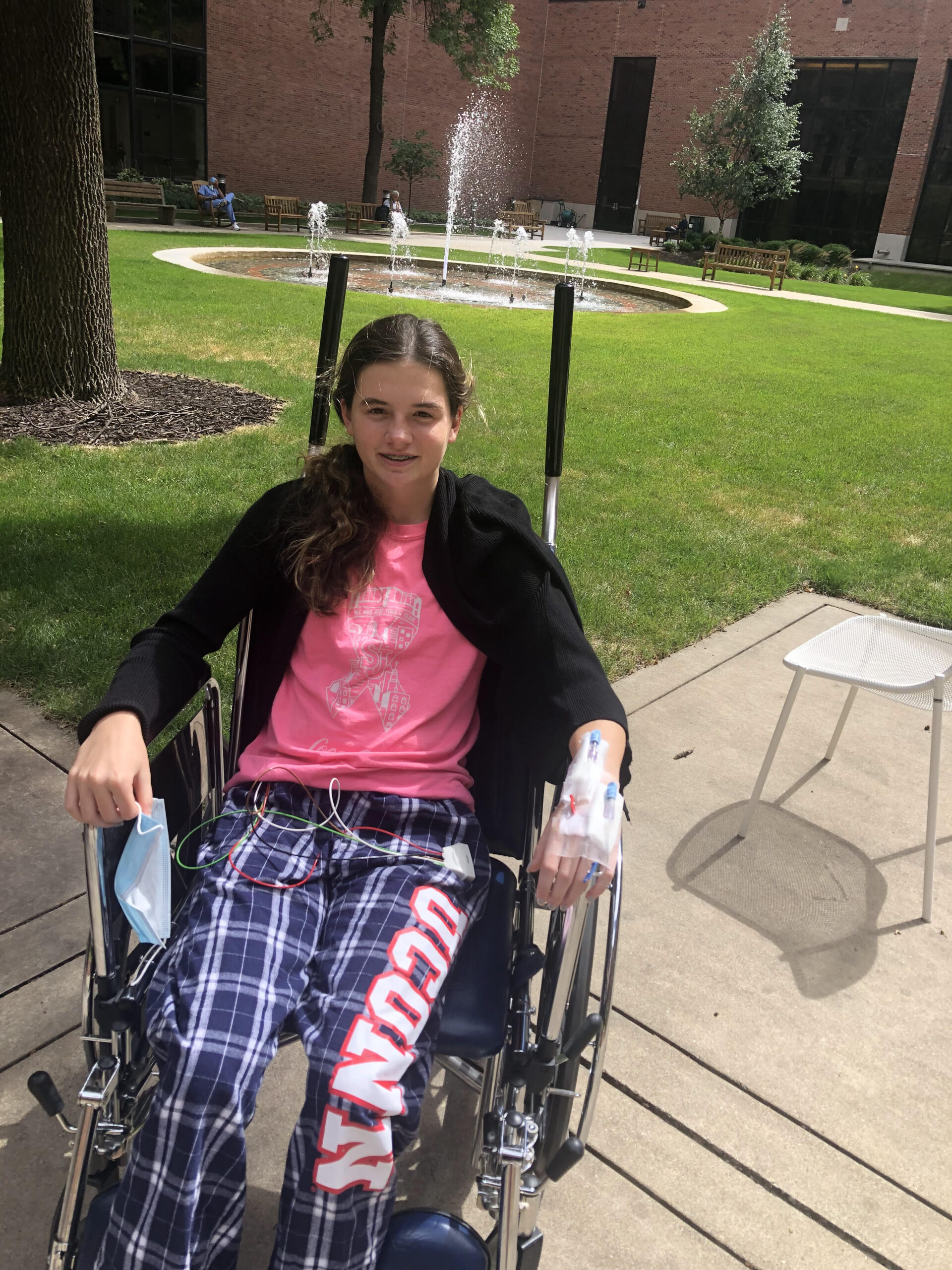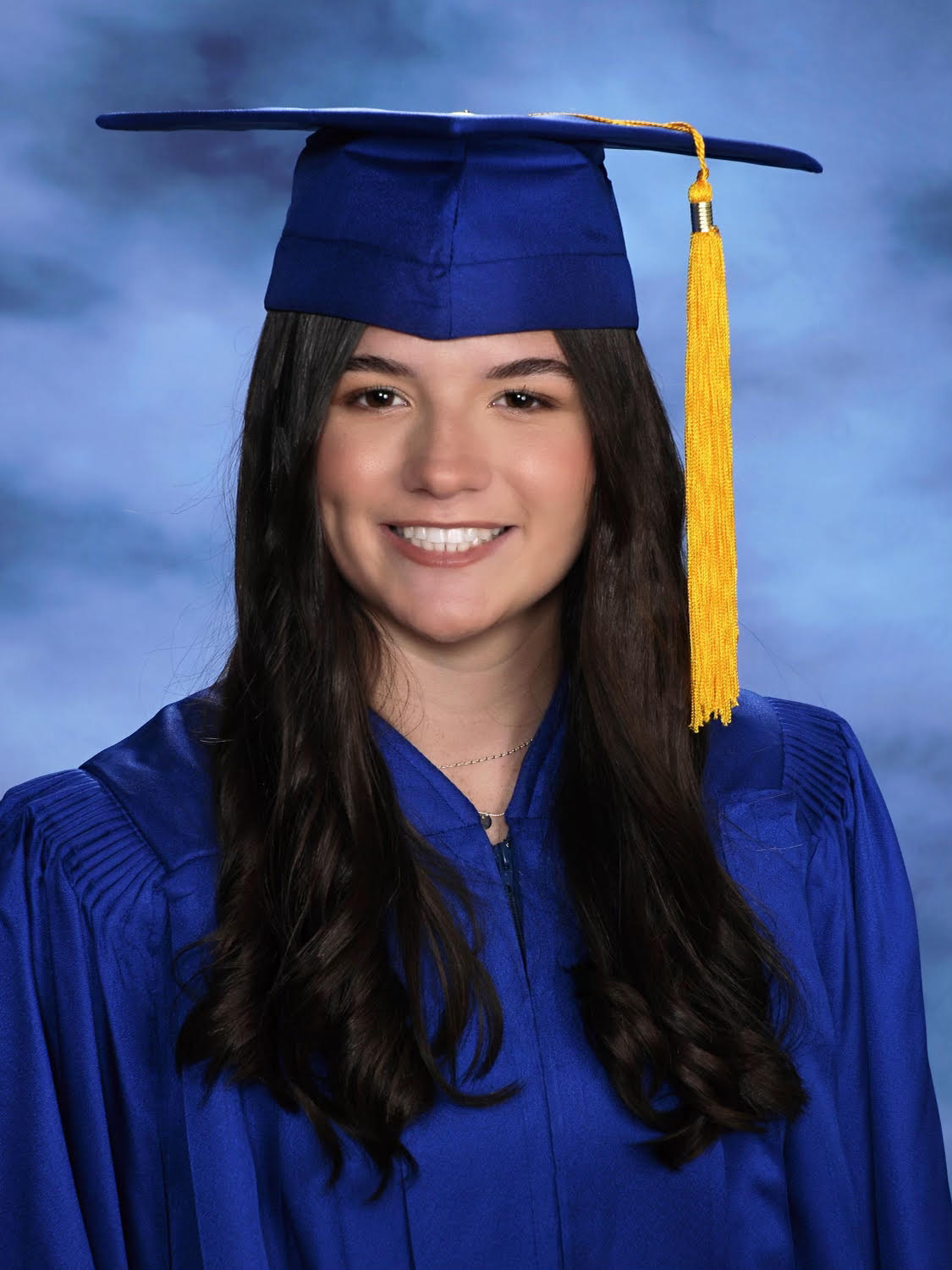
The Buffalo Scholarship
Levi’s Legacy is proud to offer a $1,000 scholarship to two heart warriors pursuing higher education.
This scholarship seeks to support a heart warrior as they continue on their education journey.
Any high school senior born with a congenital heart defect may apply to this scholarship opportunity.
To apply, please tell us about how you have charged the storm in life and what impact having a CHD has had on your life.
Applications are due by July 15th, 2025
Please note, the form on this page does not save your progress. We recommend typing your essay in another program and then submitting once it is complete.
Eligibility Requirements
- High School Senior
- Born with a CHD
2024 Buffalo Scholarship Winners
Charlotte Viola


My name is Charlotte Viola. I am a high school senior who lives with Hypertrophic Cardiomyopathy, and I would be honored to be a recipient of the Buffalo Scholarship. Thank you for taking the time to learn about my story.
I was diagnosed with Hypertrophic Cardiomyopathy as a kindergartener, but the doctors still let me play sports, so long as my parents were present with an AED. When playing basketball or softball, I felt like I was living the life I was meant to live. Sports made me feel good, gave me friendships, and taught me teamwork and resilience.
In seventh grade, just after a successful middle school basketball and softball season, I was told my risk for sudden cardiac arrest was high enough that I needed an implanted defibrillator, and I would have to take a break from sports indefinitely. I was literally heartbroken. But we all decided to stay positive and have faith that I could someday return to the field and court. We didn’t just rely on faith and positivity, however. I was fortunate to have parents who, like the buffaloes, ran towards the storm, and pulled me along with them.
I had my first open heart surgery, where an ICD was placed in my abdomen, in October of 2019 (eighth grade). The doctors said everything had gone well, and they would clear me to return to sports by January 2020. I missed a lot of school and my final CYO Basketball season. Recovery was tough, but I gradually worked on my skills and endurance and was ready to play my 8th grade basketball season. I was not the same player I was before, but I was so happy to have the opportunity to be back on the court. My family was so relieved that I had the ICD to keep me safe.
COVID hit in March, and our eighth-grade softball season was canceled. While we were sheltering at home, I continued working on my softball and basketball skills, and even started my own outdoor basketball training business for girls in the neighborhood.
Then, one day in July, I was attending an outdoor basketball workout in the park when I heard an unfamiliar beeping sound. The beeping was coming from inside my body. It was my ICD alerting me to a problem with the wires attached to my heart. We went on to have many doctor visits, with my care team conferring about what to do. They first tried adjusting the settings on the device.
The setting adjustment was a massive failure. It resulted in my receiving every ICD patient’s nightmare—a series of inappropriate shocks. To this day, I still cannot write in detail about those shocks because it is too difficult to return to that place in my mind.
There was no simple fix for the defective wires. Instead, there was a very difficult fix—a second, more complicated version of the first surgery to remove the defective wires and implant a new ICD. Before the beeping in the park, I thought I had worked through the biggest challenge of my life. Now I would have to do it all over again—the missing school, the chest tubes for drainage, the IV in my neck, the predawn wakeups for blood draws, the pain of trying to get out of bed without engaging my abdominal muscles, the feeling of wanting nothing more than to be home. And then, mentally moving past the constant awareness of a device attached to my heart. I did it once, I told myself, so I could do it again. I would again brave the storm.
My body was in a different place than my mind and rebounding the second time proved more difficult. My lungs were weakened, from twice having to be deflated during surgeries. I had complications following the second surgery and had to return to the hospital for drainage of a pleural effusion.
During my first post-surgery basketball practice, I threw up from exhaustion. The road ahead was a long and arduous one. I worked hard, mentally and physically, to get myself back in the game.
Ultimately, I did get back in the game, and I was named basketball team captain in my junior year! My goal to play college ball was dashed, but I am so grateful that I have been able to continue to play.
While my journey taught me much about perseverance and dedication, it also revealed the importance of inclusion and support from family and community. I realized what a true privilege it is to be able to play sports.
After both operations, I pursued activities that support and include others. I volunteered with my local Challenger league, assisting special needs softball players. In my junior year, I became a Peer Mentor and assisted a younger girl who had social and academic challenges, and had a heart condition like mine. Her and I connected quickly because of our shared condition and love of sports. I also volunteered with a non-profit as an SAT tutor for those who can’t afford pricey private coaches.
I recently joined the Saving Active Hearts organization and helped pass AED legislation in New York that will be an important part of keeping athletes safe. I plan to continue this work in college and join the fight for similar laws.
Now, as a senior, I am looking forward to attending college next year and pursuing a career in business. I am hoping and praying that my HCM does not progress further and allows me to stay active for as long as possible. I also hope that it allows me to put in the time and energy to be successful as a business professional. I know that I will need to return home regularly for doctor’s visits, and for the rest of my life, I will require periodic surgeries to replace my ICD when its battery depletes or when another complication arises.
I don’t know exactly what the future brings, but I think that’s what being a heart warrior is all about—being strong, adaptable, resilient, and living each day you have to its fullest. For me, it has also meant giving back. While I sometimes joke that I live my life with a “broken heart,” I now live with a fuller heart than I could have ever imagined. I have found my sunshine on the other side of my storm.
Shane Francis


I was born with three life threatening congenital heart defects named Ebstein’s Anomaly of the Tricuspid Valve, Pulmonary Stenosis, and Atrial Septal Defect. I grew up with multiple physical limitations that kept me from being involved in community sports and activities. Walking to the mailbox to check the mail was a hard task for me to accomplish. I grew up mentally preparing myself that I would not live past elementary school or at most middle school. I went into heart failure during my fifth-grade year of elementary school. I was only eleven years old with the hope that I had more time to accomplish my dreams and goals I had set for myself. I quickly realized no matter how much I mentally prepared myself for this day, I was not ready.
I will never forget the day I came home from school wearing a portable oxygen tank, heart monitor equipment, and depressed by the way I was being treated differently by teachers, when I had the surprise of my life waiting for me. It was on this day my mother informed me she found a heart surgeon from Brazil, who created a brand-new heart procedure that specialized in my rare life threating heart defects. The feeling of relief, nervousness, doubt, and anxiousness overcame me in a way I had never felt before. I underwent my third open heart surgery at the age of eleven and a half, which took over nine hours to complete. I can complete this college scholarship essay and attend college Fall 2024, because of the heart surgeon who saved my life, and because of the multiple days and nights my mother researched to find a solution that would allow me to accomplish my life goals I desperately wanted to complete.
When I realized I was no longer in heart failure and I could live a life without wearing heart monitors and oxygen equipment, I was overjoyed. My first walk to the mailbox to check the mail, I came back inside without feeling exhausted or out of breath. I remember riding my first roller coaster a year after my surgery, and how the rush of adrenalin shocked through my body. I still have physical limitations on contact sports and weightlifting restrictions, but for the most part I finally feel like I fit into my own skin. This experience opened my eyes to a world of compassion, empathy, and needs in our communities to help others. I was able to envision my future, and decided I was going to take what I personally went through and help others know they are not alone in their journeys.
I desire to complete a Bachelor of Art in Psychology, with my end goal of a Doctorates in Psychology. I was raised in a military community with my father being Active-Duty Army, which has taken us to many different places within the United States. I have seen a great need in the military community for both Active-Duty soldiers and Veterans for counseling. Post-traumatic stress disorder, depression, separation anxiety, exceptional family member programs for dependent with health conditions, suicidal thoughts, etc. runs rapid within military communities. I was given a second chance on life, and I want to give back to those and their families who put themselves in harms way to keep us safe and free back home. I volunteer currently at the local United Service Organization (USO), at Fort Campbell, KY. to share my story with the military personnel who come in and need someone to listen or talk to when they are having a hard time. My goal in life is to help at least one person a day know they are not alone and feel accepted.
